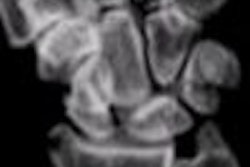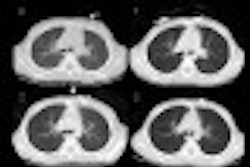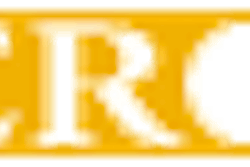Manufacturers still tout the fast scanning times, image resolution, advanced applications, and patient throughput of their CT systems, but these days they're also highlighting another important feature: dose reduction.
Driving the emphasis on dose reduction are new European regulations, as well as recent articles in the British Journal of Radiology and American Journal of Roentgenology, focusing on the potential risks of CT exposure, especially in children.
The AJR article, by Dr. David Brenner of Columbia University in New York City, warned of the cancer risks of CT in pediatric patients. It drew some criticism for its methods, but also widespread praise for sparking interest in the issue of CT radiation dose (AJR, February 2001, Vol.176:2, pp. 289-296).
And despite recent improvements to CT technology, the British Journal of Radiology reported that radiation exposures from CT are in fact rising. The issue is a global concern, but Europe appears to be leading the efforts to reduce CT dose as part of a greater European concern with radiation exposure (BJR, January 2000, Vol.73:865, pp. 43-50; BJR, January 2002, Vol.75:889, pp. 1-4).
"Americans are concerned about CT radiation like they're concerned about global warming," a radiologist at the 2002 European Congress of Radiology told AuntMinnie.com. "Everyone says they are concerned, but only the Europeans are willing to do something about it."
"Europeans have been more concerned about radiation exposure and CT dose for some time now," said Dr. Mathias Prokop, associate professor of radiology at the University of Vienna. But Brenner told AuntMinnie.com that he believed American radiologists have always been just as concerned about radiation exposure.
As for the leading CT vendors, they generally agree with Prokop’s assessment.
"Europe absolutely has been more concerned, although I don’t know exactly why," said Dr. Stefan Schaller, head of the concepts group in the CT division at Siemens Medical Solutions of Erlangen, Germany. According to Schaller, Europeans expressed concern about dose as far back as the 1970s, shortly after CT came into clinical use. Until recently, the issue was not a big concern in the U.S., he observed.
"Most of the (American) radiologists wanted more power in the tube," Schaller said. "They wanted protocols where they could crank up the power. But in Europe, customers were more conservative, they wanted the best image at the lowest possible dose. But in the last one or two years, this has changed in the U.S. as well."
Improving technology
As many as 50 million CT exams are performed globally each year, and CT accounts for as much as 50% of all medical radiation exposure.
For their part, manufacturers say they have always been concerned about dose, and that they were working hard to reduce it even before the journal articles appeared.
"For the past two years -- before the AJR article was written -- GE worked with leading pediatric radiologists to develop Color Coding for Kids, which offers a full range of pre-loaded pediatric protocols based on a child’s weight and height," said Peter Arduini, general manager of global CT for GE Medical Systems of Waukesha, WI. Siemens and Philips Medical Systems of Best, the Netherlands, also noted their dose-optimizing and dose-reduction features.
Siemens has incorporated CareDose into its CT systems, which modulates tube current as it rotates around the patient to optimize dose. Protocols, especially pediatric protocols, are also programmed to reduce dose when possible. The Philips scanners are equipped with Intellibeam software to minimize dose, according to William Kulp, manager of global CT marketing at Philips.
Toshiba Medical Systems includes dose displays and a dual shaft support for the tube to increase stability in its Aquilion and Asteion CT systems. More efficient heat dissipation reduces the system’s dose index, said Dr. Bryan Westerman, clinical sciences manager for CT at Toshiba.
"Our Real EC exposure control feature enables automatic exposure control, which is very effective at minimizing exposure levels without compromising diagnostic quality," Westerman said.
Vendors admit that CT is generally a high-dose modality, but emphasized that it also yields diagnostic information not found in lower-dose imaging methods. The best place to put the emphasis is on dose efficiency, Schaller said.
"You need a certain number of photons for the image, that’s a law of nature," he said. "But by improving dose awareness, users will only apply as much dose as is required. You don’t really need to have the best image quality -- you need just enough to have diagnostic quality."
Efforts to minimize dose exposure have even run into obstacles from the U.S. Food and Drug Administration. When Siemens created dedicated protocols that could significantly reduce CT dose for pediatric studies, the FDA at first called the modifications a new indication requiring approval. Siemens eventually convinced the agency that approval wasn't necessary, as the company was merely changing the scanning parameters to optimize existing applications.
Good clinical practice in CT
Within Europe, Germany has been the country with the most stringent controls on medical radiation, particularly CT dose. The country mandated that default protocols on CT scanners be low-dose.
The Euratom Directives of 1984 were among the first to emphasize using lower CT doses as part of good practice. In 1994, a European Commission Working Party began developing guidelines for good clinical practice in CT, including the development of reference dosimetry based on weighted CT dose index (CTDI) and dose-length product (DLP). Guidelines for six major scanning applications were released in 2000.
A follow-up Euratom Directive in June 1997 advanced the EU’s goal of lowering CT dose. Europe also required that CT systems display radiation dose -- and the displays quickly became a standard feature on CT scanners sold worldwide.
But Prokop believes that far more can be done to reduce patient dose.
"Surveys show that people use the same dose for scanning the chest that they do for scanning the abdomen," he said. "We developed a program that could adapt a dose to the diameter of the patient, and were able to cut dose on average by about 30%."
Advanced technology may help propel the efforts to minimize dose. Although many radiologists contend that multislice scanners require more dose, the opposite is true, Siemens' Schaller noted. The more slices, the greater the dose efficiency, he said, which provides improved image quality without increasing dose.
And from GE, Arduini said that the firm's LightSpeed Ultra 8-slice scanner was able to reduce dose by as much as 30%.
Improving electronics also will reduce dose, said Kulp of Philips, by lowering the noise floor by as much as 15%. New scanners will also offer better image processing.
"If you can reconstruct the image more efficiently, you won’t need as much signal to get the image," Kulp said. "You won’t have to use a ‘brute force’ method to drown out imperfections."
By Brenda TilkeAuntMinnie.com contributing writer
April 2, 2002
Related Reading
Pediatric CT safety increased with new imaging techniques, March 12, 2002
Chicago Children's Hospital lowers pediatric chest CT dose, November 29, 2001
Significant difference in radiation dose found between single- and multislice CT, November 25, 2001
FDA offers guidance on lowering CT dose, November 6, 2001
Copyright © 2002 AuntMinnie.com



















